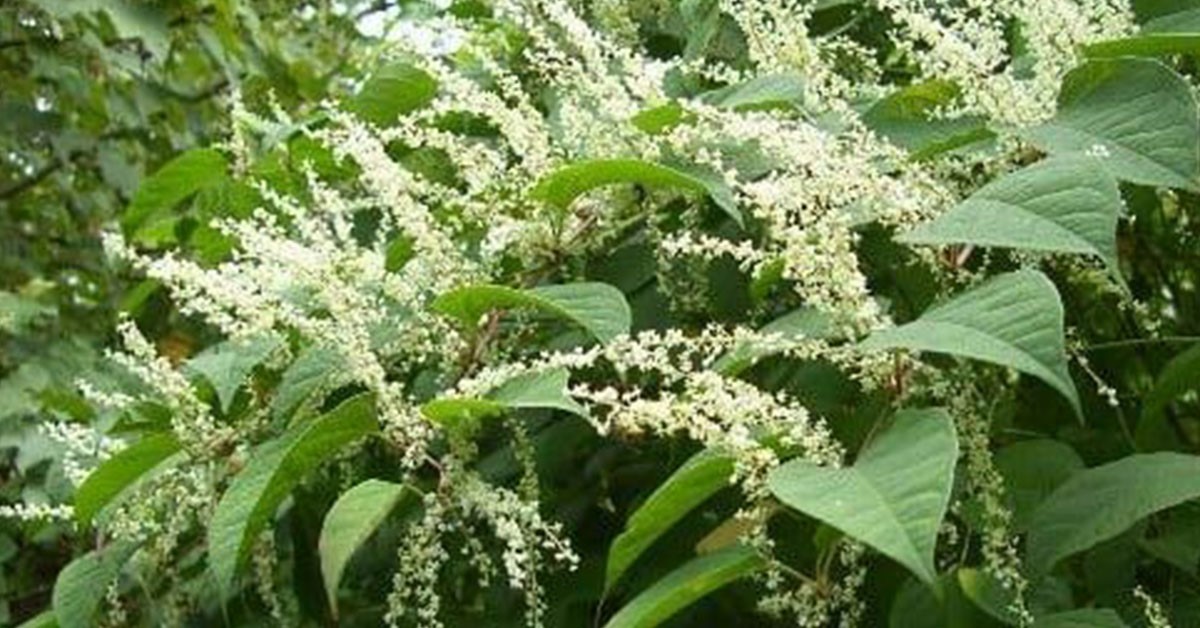
Where did it come from?
Japanese Knotweed (Fallopia japonica), was first brought to the UK by a German-born botanist named Philipp von Siebold who found the plant growing on the sides of volcanoes in Japan in 1840.Von Siebold collected samples to take to his nursery in Leiden (Holland). In August 1850 the Royal Botanical Gardens in Kew received a gift parcel of plants including Japanese Knotweed from von Siebold’s nursery. The plants were cultivated and went on sale in large numbers shortly after.
Japanese Knotweed was originally noted for its beauty and potential to be used as feed for animals. Its deep root system also made it ideal for shoring up areas of loose soil and it was widely used in coal mining areas and railway embankments to restore/ensure ground stability.
Why does it spread so rapidly?
In Japan, the plants growth is inhibited by the harsh mountainside climate, pests, disease, fungi and plant competitors which limit its access to light. In Britain the plant thrives because it has no natural plant competitors, pests or animals which feed on it or diseases which attack it; so it’s capacity to grow is almost completely unchecked.
How does it spread?
Like most plants, Japanese Knotweed needs a continuous supply of fresh water and minerals. To locate the water and minerals required the roots of Japanese Knotweed grow deeper and more quickly than most other plants. The roots from a Japanese Knotweed plant may grow to a depth of 3m. By comparison, the roots of a bamboo plant of similar height will only go down to 1m.
Like many other invasive plants, Knotweed uses rhizomes (underground stems, which continually grow outwards) to spread. These rhizomes are capable of producing new shoots and roots and allow the plant to multiply and spread without the need for releasing seeds.
Japanese Knotweed is extremely hard to remove completely. Unlike most plants, Japanese Knotweed will regrow from the smallest parts of a root or rhizome left in the soil or dropped as it is removed from the site. It is now classed as ‘controlled waste’ and should be dealt with by a specialist to avoid accidental spread.
What problems can Knotweed cause?
Japanese knotweed is an extremely resilient and fast-growing plant (growing up to 10cm per day). It can cause damage to:
- Concrete, wood, Tarmac or paved areas of hardstanding.
As a rule of thumb, if water can penetrate the hard surface and reach the plant’s roots (either permeating through the material or by following a crack), the plant stems will use the same tiny holes or weak spot and grow up through the substance in order to reach light. Once the plant has broken through the surface, the stem will start to expand and break the object apart. - Cavity walls.
If the plant finds its way through an air brick, vent or hole in pointing or masonry, and gets inside the cavity wall it can expand with enough strength to push the walls apart and cause structural failure. - Drains.
Knotweed roots seek out abundant sources of water. If a root grows into a tiny join or crack of a pipe it will expand and eventually break the pipe or force it apart. - Restriction of access.
Because of the risk of spreading is so high, access to areas within 7m horizontally from the nearest growth should be limited (so if you find the plant next to your driveway you may be unable to use it).
How to recognise Japanese Knotweed?
To identify the plant you need to look for some distinctive features:
- Shoots are red when they break through the ground.
- Leaves are rolled up and unroll at the sides.
- Bright green heart shaped leaves
- Zig zag stem growth.
- Hollow stems
What to do if you find Japanese Knotweed
If you find Japanese Knotweed on your property the best thing to do is get it dealt with professionally by a registered waste carrier. You can find further information about registered waste carriers on the Environment Agency website. You are strongly advised not to try and deal with it yourself unless you have expert. Knowledge and experience.
Why are mortgage lenders so cautious about properties with Japanese Knotweed?
Because of the damage it can cause and the issues getting rid of it, mortgage lenders are wary of properties which either have Japanese knotweed or are close to it. If you’ve already bought a property and then found Japanese knotweed you could face some challenges if you want to
re-mortgage.
Some lenders decline mortgages on properties where Knotweed is present, but others have a more lenient approach judging applications on a case by case basis. These lenders will almost certainly want to see proof that the affected area has be treated by a specialist and that the work is covered by insurance lasting several years.
Buyer beware
There are a number of environmental searches that have to be carried out when a property is bought or sold, but none of these searches include Japanese Knotweed. If the owner is aware of Knotweed growing on the property it must be declared in a Property Information Form. However, the owner may not be aware of the plant so it’s important that you get a comprehensive survey before you commit to purchase. Chartered building surveyors are trained to recognise Japanese Knotweed, so a building survey report should highlight any presence of the plant or advise if the garden is close to an area where the plant is likely to be found.
Post a comment
You must be logged in to post a comment.















